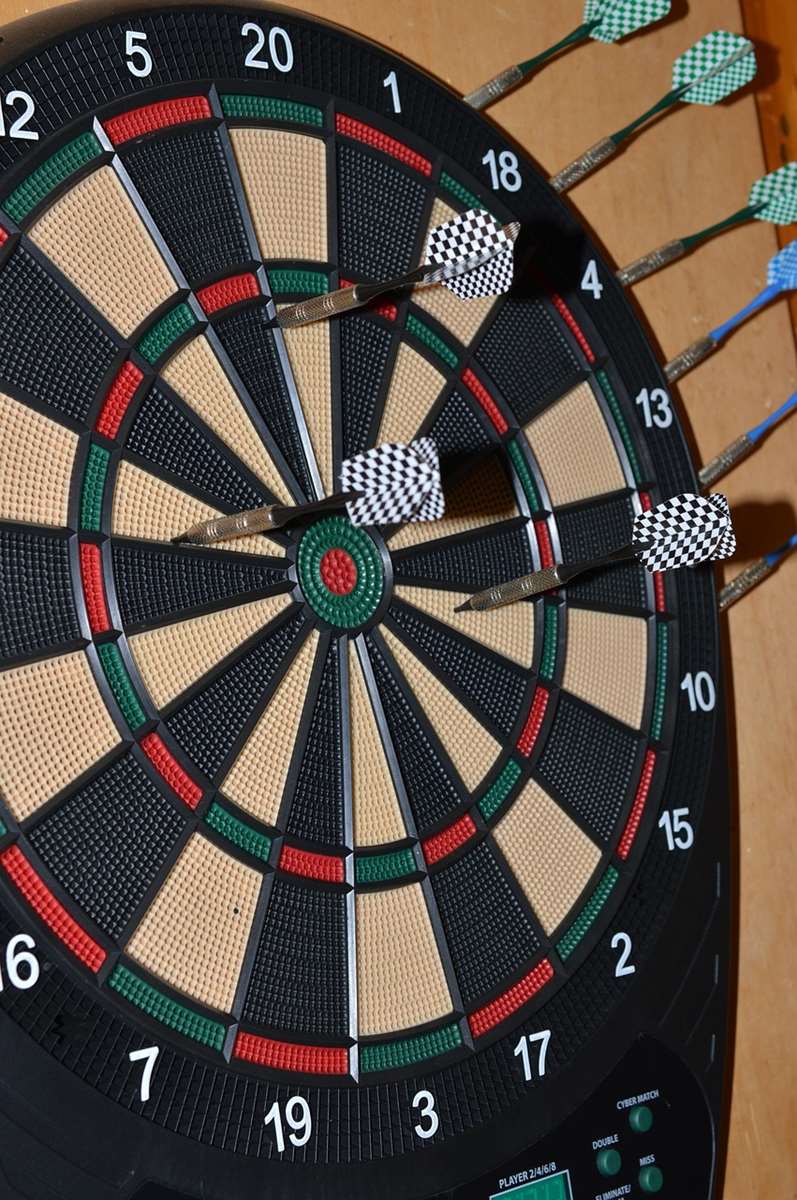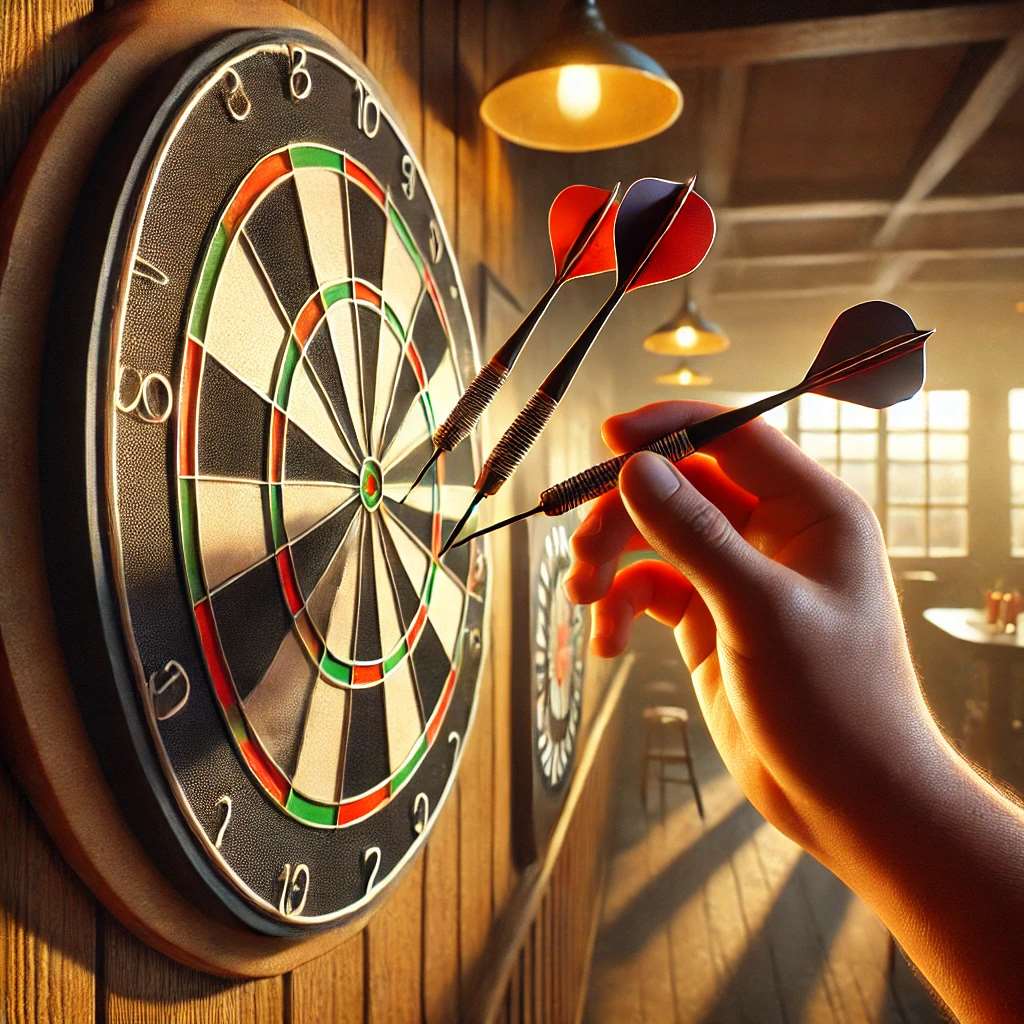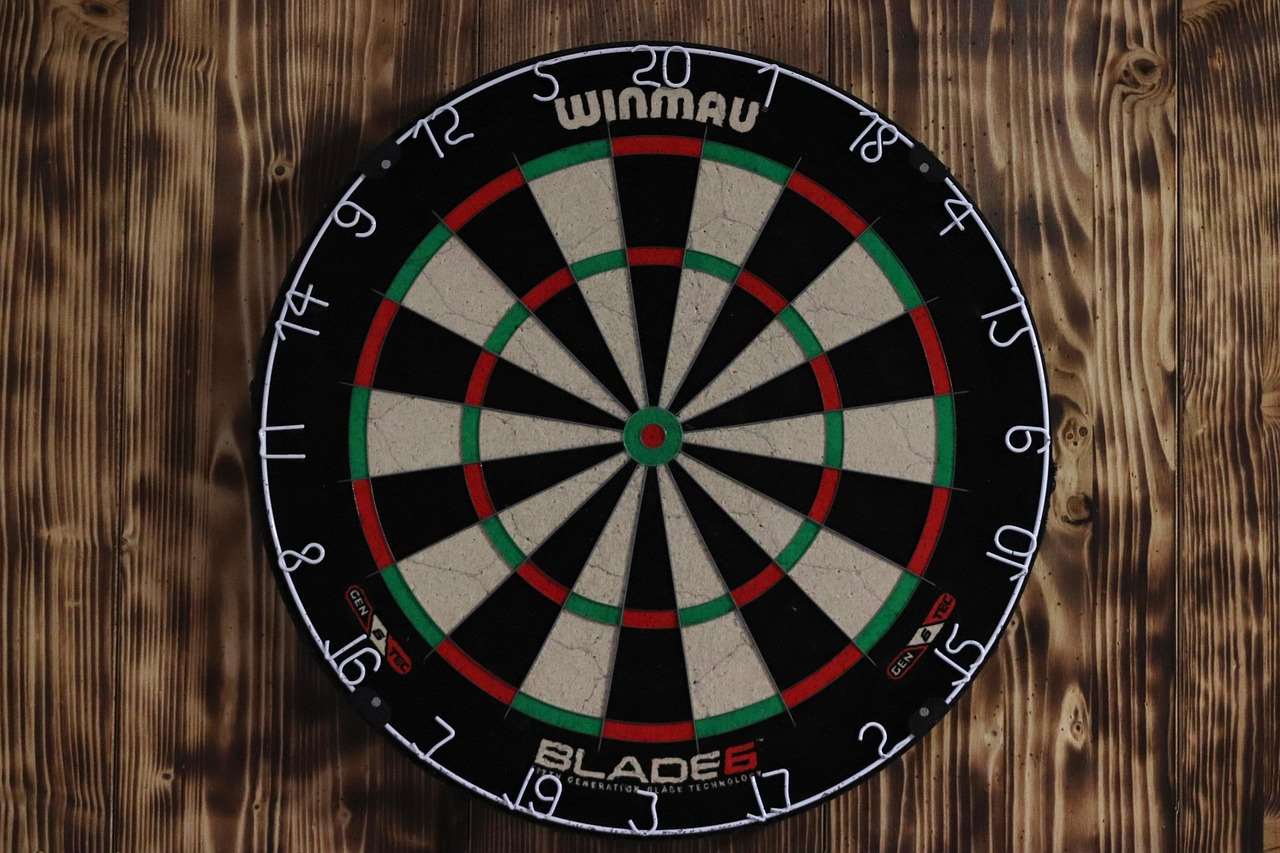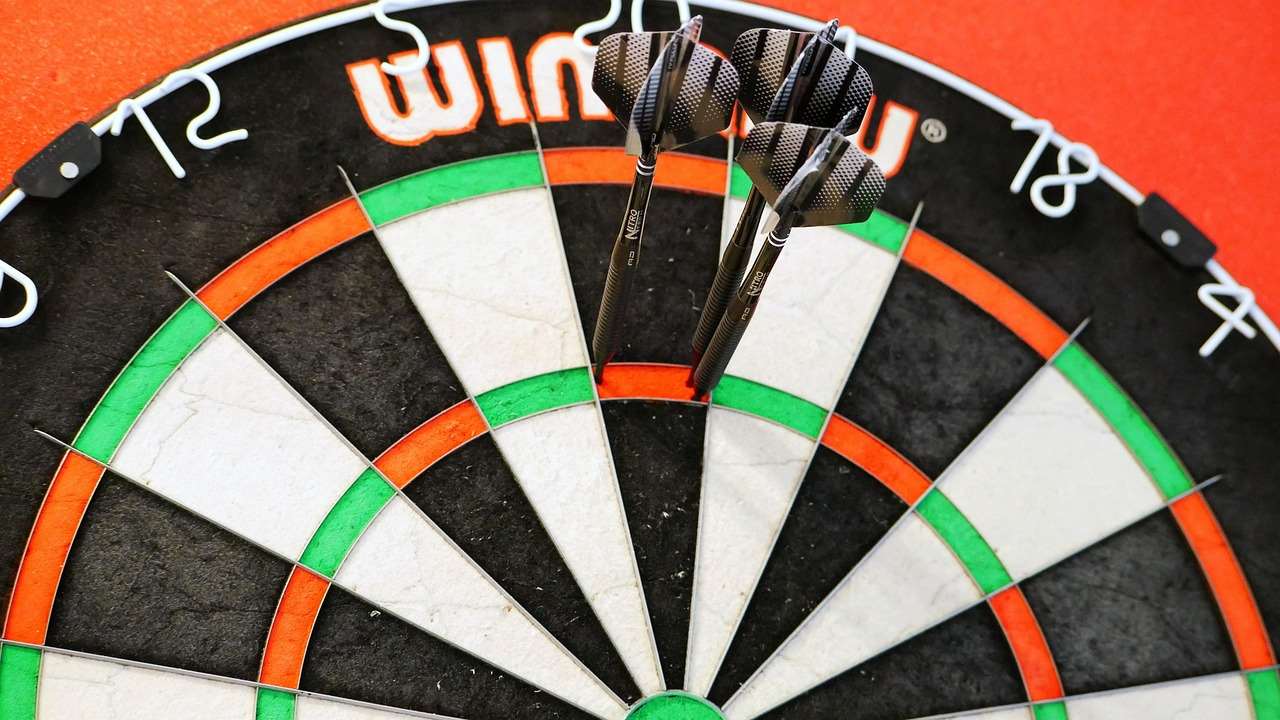Knowing where to stand in darts is fundamental to consistent accuracy: position yourself at the oche (the throwing line) so that your dominant eye aligns with the center of the dartboard. This article will delve into finding your optimal stance, adjusting for different throwing styles, understanding the rules, and practicing effectively to improve your game.
⚠️ Still Using Pen & Paper (or a Chalkboard)?! ⚠️
Step into the future! The Dart Counter App handles all the scoring, suggests checkouts, and tracks your stats automatically. It's easier than you think!
Try the Smart Dart Counter App FREE!Ready for an upgrade? Click above!
Finding Your Ideal Stance: The Foundation of Accurate Darts
Your stance in darts is the bedrock upon which your entire throw is built. It provides stability, balance, and a consistent platform for aiming and release. There’s no one-size-fits-all approach, so experimentation is key to discovering what works best for you. The three most common stances are the straight-on stance, the side stance, and the modified stance. Each offers unique advantages and disadvantages.

The Straight-On Stance
In the straight-on stance, you face the dartboard directly, with your dominant foot positioned close to the oche. This stance allows for a direct line of sight to the target and can provide a feeling of stability. However, it can also restrict your body’s natural throwing motion if you’re not careful. Many beginners find this stance intuitive, but it often requires adjustments as they progress.
- Pros: Direct line of sight, good for beginners.
- Cons: Can restrict throwing motion.
- Tips: Ensure your weight is evenly distributed.
The Side Stance
The side stance involves positioning yourself at an angle to the dartboard, with your dominant side facing forward. This stance allows for a more natural and fluid throwing motion, as your arm can swing freely without obstruction. It also opens up your chest and shoulders, which can improve balance and power. A common problem is over-rotating the shoulders, which throws off the accuracy.
- Pros: Natural throwing motion, improved balance.
- Cons: Requires more practice to master the alignment.
- Tips: Keep your shoulders square to the board.
The Modified Stance
The modified stance is a hybrid approach that combines elements of both the straight-on and side stances. You stand at a slight angle to the dartboard, allowing for a comfortable balance between direct line of sight and freedom of movement. This stance is often favored by experienced players who have fine-tuned their technique. Many players find that this stance allows them to use a darts game meaning with less effort.
- Pros: Balance of stability and freedom.
- Cons: Requires experience to find the right angle.
- Tips: Adjust the angle until it feels natural.
Fine-Tuning Your Position at the Oche
Once you’ve chosen your stance, the next step is to fine-tune your position at the oche. This involves experimenting with your foot placement, weight distribution, and body alignment. Small adjustments can make a big difference in your accuracy and consistency.

Foot Placement
Your foot placement is crucial for maintaining balance and stability. Your dominant foot should be positioned close to the oche, but not so close that you’re leaning forward excessively. Experiment with different foot positions until you find one that feels comfortable and stable. A good starting point is placing your dominant foot just behind the edge of the oche, angled slightly towards the center of the dartboard.
Weight Distribution
Your weight distribution should be balanced and even. Avoid leaning too far forward or backward, as this can throw off your balance and affect your throw. Try to distribute your weight evenly between both feet, or slightly favor your dominant foot. Finding the right balance will allow for a more controlled and consistent release.
Body Alignment
Your body alignment is also important for accuracy. Make sure your shoulders are square to the dartboard, and your head is positioned directly above your dominant foot. Avoid twisting your body or tilting your head, as this can disrupt your throwing motion. Many players also benefit from the assistance of a darts pole stand, as it provides a visual aid for alignment.
Adjusting Your Stance for Different Throwing Styles
Your stance should also be adjusted to accommodate your throwing style. If you have a more fluid and natural throwing motion, a side stance might be more suitable. If you prefer a more controlled and deliberate throw, a straight-on stance might be a better fit. Remember, the key is to find a stance that allows you to throw comfortably and consistently.
The Importance of the Follow Through
Regardless of your stance, a good follow-through is essential for accuracy. After releasing the dart, continue your arm motion smoothly towards the target. This helps to maintain a consistent release point and prevents you from pulling the dart off target. Practice your follow-through until it becomes a natural part of your throwing motion. If you want to know where is the darts championship tonight, you could see pros with expert follow-throughs.
Understanding the Rules: The Official Throwing Distance
The official throwing distance in darts is 7 feet 9 1/4 inches (2.37 meters) from the face of the dartboard to the oche. It’s crucial to adhere to this distance to ensure fair play and accurate scoring. Always measure the distance carefully before starting a game, and ensure that the oche is clearly marked. Stepping over the oche while throwing is against the rules and can result in a penalty. Knowing the correct distance is fundamental, regardless of where to stand in darts along that line.
Practicing for Consistency: Building Muscle Memory
Practice is essential for developing a consistent stance and throwing motion. The more you practice, the more ingrained your technique will become, and the more consistently you’ll be able to hit your targets. Set aside regular practice time, and focus on maintaining your stance and follow-through. Consider using a digital dart score app to track your progress and identify areas for improvement. Digital dart score app provides a useful way to keep track of scores.

Drills for Stance Improvement
Here are a few drills you can use to improve your stance and throwing motion:
- Foot Placement Drill: Place a piece of tape on the floor to mark your ideal foot position. Practice standing on the tape and throwing darts, focusing on maintaining your balance and alignment.
- Weight Distribution Drill: Stand on a scale while throwing darts. Monitor your weight distribution to ensure it’s balanced and even.
- Follow-Through Drill: Practice your follow-through in front of a mirror. Focus on maintaining a smooth and consistent arm motion.
Advanced Techniques: Adjusting for Wind and Other Factors
Experienced dart players learn to adjust their stance and throwing motion to compensate for external factors such as wind, uneven floors, or distractions. These adjustments require a high level of skill and experience, but they can make a significant difference in your performance. One of the first things to learn is where to stand in darts, then how to handle external factors.
Dealing with Wind
Wind can have a significant impact on the trajectory of your darts, especially when playing outdoors. To compensate for wind, try adjusting your stance slightly to the left or right, depending on the direction of the wind. You may also need to adjust your throwing power to compensate for the wind’s resistance.
Adjusting for Uneven Floors
Uneven floors can throw off your balance and affect your accuracy. To compensate for uneven floors, try adjusting your foot placement or using a small shim to level out your stance. You may also need to adjust your throwing motion to maintain your balance.

The Mental Game: Confidence and Focus
Your mental state can also play a significant role in your dart game. Confidence and focus are essential for maintaining a consistent stance and throwing motion. Believe in yourself, stay focused on the target, and don’t let distractions affect your performance. Some players find that controlled breathing exercises can help maintain focus and reduce pre-game jitters. Understanding the darts leg by leg stats can help with strategizing and building confidence.
Choosing the Right Darts and Equipment
The right darts and equipment can also help improve your stance and throwing motion. Experiment with different dart weights, shaft lengths, and flight shapes to find what works best for you. Make sure your dartboard is properly mounted and in good condition. A well-maintained dartboard and quality darts can significantly improve your accuracy and consistency.
Common Mistakes to Avoid
Here are some common mistakes to avoid when choosing where to stand in darts:
- Standing too close to the oche: This can restrict your throwing motion and throw off your balance.
- Leaning too far forward or backward: This can disrupt your balance and affect your throw.
- Twisting your body or tilting your head: This can disrupt your throwing motion.
- Not following through properly: This can prevent you from maintaining a consistent release point.
- Failing to adjust for external factors: Wind, uneven floors, and distractions can all affect your accuracy.

Analyzing Professional Players’ Stances
Watching professional dart players can provide valuable insights into different stance techniques. Pay attention to their foot placement, weight distribution, body alignment, and follow-through. While you shouldn’t try to copy their stances exactly, you can learn from their techniques and adapt them to your own style. Examining their approach to where to stand in darts can greatly improve your game.
The Importance of Regular Maintenance
Regularly inspect your darts and equipment to ensure they are in good condition. Replace worn-out flights and shafts, and clean your dartboard regularly to remove dust and debris. Proper maintenance will help to prolong the life of your equipment and ensure consistent performance. Don’t be afraid to check out what darts shafts sports direct has to offer to keep your darts in top shape.
Conclusion: Mastering Your Stance for Darts Success
Finding the perfect stance in darts is a journey of experimentation and refinement. By understanding the different stance options, fine-tuning your position at the oche, adjusting for your throwing style, and practicing consistently, you can develop a stance that provides stability, balance, and a consistent platform for accurate throws. Remember to stay focused, maintain your confidence, and adjust for external factors as needed. Now, grab your darts and start practicing! Consider documenting your progress to help other players understand where to stand in darts for optimal results. Continue to adjust your stance based on what you learn and improve!
Hi, I’m Dieter, and I created Dartcounter (Dartcounterapp.com). My motivation wasn’t being a darts expert – quite the opposite! When I first started playing, I loved the game but found keeping accurate scores and tracking stats difficult and distracting.
I figured I couldn’t be the only one struggling with this. So, I decided to build a solution: an easy-to-use application that everyone, no matter their experience level, could use to manage scoring effortlessly.
My goal for Dartcounter was simple: let the app handle the numbers – the scoring, the averages, the stats, even checkout suggestions – so players could focus purely on their throw and enjoying the game. It began as a way to solve my own beginner’s problem, and I’m thrilled it has grown into a helpful tool for the wider darts community.